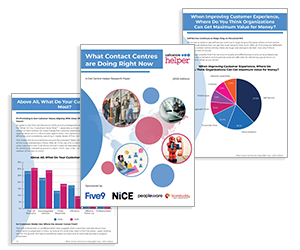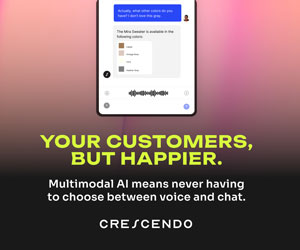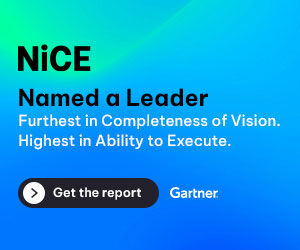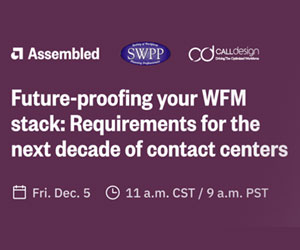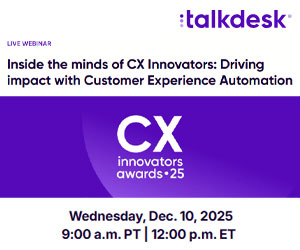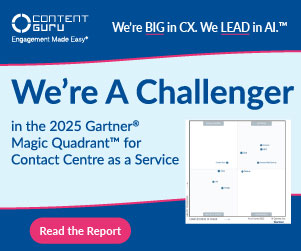This blog summarizes the key points from a recent article from David McGeough at Scorebuddy, showing you how to build that strategy, what you need to watch out for, and why the QA data you’re already using can help you find the best agents.
Call centre recruitment plays a crucial role in building a strong, high-performing team of agents – the very people who represent your brand and interact with customers every day.
When the wrong agents are hired, the impact shows quickly: lower customer satisfaction, higher turnover, and wasted time and money spent on constant rehiring and training.
With average annual contact centre attrition hovering around 60%, it’s clear that finding and keeping the right people is no small task.
The good news? With a clear recruiting strategy backed by QA data and performance insights, you can identify top talent, hire more effectively, and reduce employee churn – all while improving the customer experience.
7 Steps to Create a Winning Call Centre Recruitment Strategy
1. Define Your Ideal Agent Profile Using QA Insights
Start with what your data already tells you. Analyse QA scores, call performance, and supervisor feedback to pinpoint the traits behind your best agents’ success – things like speed, empathy, accuracy, and script adherence.
Different roles call for different strengths: outbound sales reps thrive on assertiveness and closing ability, while service agents need patience and emotional intelligence.
Use these trends to build measurable hiring criteria, just like creating customer personas. Then align your interview questions and assessments with those benchmarks for consistent, data-driven hiring.
2. Build a Brand That Draws in Top Talent
Your employer brand shapes how potential agents see you. Job seekers care about company culture, career growth, and stability long before they apply.
According to the Job Seeker Nation Report:
- 52% want career advancement
- 32% value a better company culture
- 39% left a new job within 90 days due to poor culture
Reflect those priorities in your job listings, careers page, and social channels. Emphasize opportunities, growth, and purpose to set your company apart from generic staffing posts – and attract the agents who’ll stay and succeed.
3. Craft Job Posts That Speak to the Right Candidates
Every job post should act as your first impression. Keep it clean, engaging, and specific by following this quick checklist:
- Clear, accurate job title
- Short intro about your company and mission
- Bullet-point responsibilities and daily tasks
- Separate required vs. preferred qualifications
- Work setup (remote, hybrid, or on-site)
- Pay range and benefits
- Career growth and performance expectations
- Straightforward application steps
This structure ensures candidates know exactly what to expect – and helps you attract those most aligned with your team.
4. Use the Right Recruitment Channels for Each Role
Great hiring depends on using the right mix of sourcing channels. Internal referrals, job boards, and staffing partners all play a role – but tailor your approach by job type.
Inbound support roles may come from different networks than outbound sales or bilingual service teams. If you work with an external agency, keep control of the standards in-house and share QA-based criteria to ensure consistency.
The more targeted your outreach, the better your candidate quality and fit.
5. Streamline and Standardise the Hiring Process
A structured interview process saves time and ensures fairness. Incorporate role plays and simulations to test communication skills and problem-solving under real conditions.
Use your QA scorecards to evaluate candidates consistently across every stage. This data-driven approach ties hiring directly to on-the-floor performance – helping you make objective, faster decisions and reducing time-to-hire without sacrificing quality.
6. Test Job Readiness with Real-World Scenarios
Job simulations let you see how candidates will actually perform. Create exercises that mirror the pace and pressure of real calls – like complaint handling, upselling, or tech support.
Tailor these simulations to each agent persona (inbound, outbound, multilingual) and score them using your QA framework. This helps you identify candidates who not only interview well but can thrive in your call centre environment.
7. Collaborate Across Teams for Smarter Hiring
Recruitment shouldn’t operate in a vacuum. Involve QA teams, supervisors, and operations leaders early in the hiring process. They bring critical insights about what defines success on the floor.x
Combine feedback from QA metrics, customer sentiment, and training outcomes to shape your hiring criteria. Cross-functional collaboration makes recruiting faster, more precise, and better aligned with performance goals.
Call Centre Interview Question Examples
The best interview questions reveal how candidates think, react, and align with your values. Here are a few to start with:
- Tell me about a time you turned an unhappy customer into a satisfied one.
- How do you manage high call volumes while maintaining quality?
- What does great customer service mean to you?
- How do you learn new systems or tools?
- What helps you stay calm under pressure?
- How do you ensure accuracy in your work?
Common Call Centre Recruiting Mistakes to Avoid
Even a strong strategy can fail if you overlook these pitfalls:
- Relying on instinct over data
- Prioritizing speed instead of fit
- Over-delegating to third-party recruiters
- Ignoring supervisor feedback
- Using identical interview templates for every role
- Overlooking soft skills and culture fit
- Skipping structured onboarding
- Failing to track post-hire performance
Avoiding these missteps helps you build stronger teams that last.
Why QA Data Is the Key to Better Hiring
QA data gives you a complete, objective view of what success looks like. Analysing performance scorecards reveals the traits and behaviours that set top performers apart – and helps you shape interviews and assessments that target those skills.
With AI-powered QA, you can now analyse 100% of customer interactions, giving you deep insight into communication styles, problem-solving, and compliance. It also supports onboarding and continuous improvement by connecting hiring data to real-world outcomes.
Strong Hiring Drives Stronger Customer Experiences
Recruitment is the foundation of great CX. The better your hiring strategy, the better your service quality and employee retention.
Use QA data to define success, involve every team from QA to leadership, and make your job postings stand out with clear purpose and opportunity.
Soft skills like empathy, critical thinking, and adaptability separate good agents from great ones – and our Call Centre Soft Skills eBook can help you identify and develop them throughout your hiring and training process.
This blog post has been re-published by kind permission of Scorebuddy – View the Original Article
For more information about Scorebuddy - visit the Scorebuddy Website
Call Centre Helper is not responsible for the content of these guest blog posts. The opinions expressed in this article are those of the author, and do not necessarily reflect those of Call Centre Helper.
Author: Scorebuddy
Reviewed by: Rachael Trickey
Published On: 7th Nov 2025
Read more about - Guest Blogs, David McGeough, Scorebuddy






 Scorebuddy is quality assurance solution for scoring customer service calls, emails and web chat. It is a dedicated, stand-alone staff scoring system based in the cloud, requiring no integration.
Scorebuddy is quality assurance solution for scoring customer service calls, emails and web chat. It is a dedicated, stand-alone staff scoring system based in the cloud, requiring no integration. 




